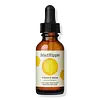What's inside
What's inside
 Key Ingredients
Key Ingredients

 Benefits
Benefits

 Concerns
Concerns

No concerns
 Ingredients Side-by-side
Ingredients Side-by-side

Water
Skin ConditioningAscorbyl Glucoside
AntioxidantDibutyl Adipate
EmollientPentylene Glycol
Skin ConditioningTromethamine
BufferingPropanediol
SolventGlycerin
HumectantBetaine
HumectantSucrose
HumectantTocopheryl Acetate
AntioxidantBehenyl Alcohol
EmollientHydrolyzed Rhodophyceae Extract
Azelaic Acid
BufferingXanthophylls
Skin ConditioningBacillus Ferment
Skin ConditioningPhosphatidylcholine
EmulsifyingBeta-Sitosterol
Emulsion StabilisingArctium Lappa Root Extract
Skin ConditioningChamomilla Recutita Extract
Skin ConditioningSalvia Officinalis Leaf Extract
CleansingTropaeolum Majus Extract
AntimicrobialPhytosphingosine
Skin ConditioningMannitol
HumectantTocopherol
AntioxidantLecithin
EmollientSorbitan Oleate
EmulsifyingXanthan Gum
EmulsifyingSodium Phytate
Sodium Stearoyl Glutamate
CleansingPotassium Cetyl Phosphate
EmulsifyingAmmonium Acryloyldimethyltaurate/Vp Copolymer
Cetrimonium Chloride
AntimicrobialLactic Acid
BufferingPotassium Lactate
BufferingCitric Acid
BufferingEthylhexylglycerin
Skin ConditioningHydroxyacetophenone
AntioxidantPotassium Sorbate
PreservativeWater, Ascorbyl Glucoside, Dibutyl Adipate, Pentylene Glycol, Tromethamine, Propanediol, Glycerin, Betaine, Sucrose, Tocopheryl Acetate, Behenyl Alcohol, Hydrolyzed Rhodophyceae Extract, Azelaic Acid, Xanthophylls, Bacillus Ferment, Phosphatidylcholine, Beta-Sitosterol, Arctium Lappa Root Extract, Chamomilla Recutita Extract, Salvia Officinalis Leaf Extract, Tropaeolum Majus Extract, Phytosphingosine, Mannitol, Tocopherol, Lecithin, Sorbitan Oleate, Xanthan Gum, Sodium Phytate, Sodium Stearoyl Glutamate, Potassium Cetyl Phosphate, Ammonium Acryloyldimethyltaurate/Vp Copolymer, Cetrimonium Chloride, Lactic Acid, Potassium Lactate, Citric Acid, Ethylhexylglycerin, Hydroxyacetophenone, Potassium Sorbate
Water
Skin ConditioningSodium Ascorbyl Phosphate
AntioxidantC12-15 Alkyl Benzoate
AntimicrobialGlycerin
HumectantSodium Levulinate
Skin ConditioningSodium Anisate
AntimicrobialSalvia Sclarea Oil
MaskingCitrus Grandis Fruit Extract
AstringentHyaluronic Acid
HumectantAmorphophallus Konjac Root Powder
AbrasiveAloe Barbadensis Leaf
MaskingTocotrienols
Skin ConditioningFerulic Acid
AntimicrobialChamomilla Recutita Extract
Skin ConditioningSodium Phytate
Xanthan Gum
EmulsifyingHydroxyethylcellulose
Emulsion StabilisingWater, Sodium Ascorbyl Phosphate, C12-15 Alkyl Benzoate, Glycerin, Sodium Levulinate, Sodium Anisate, Salvia Sclarea Oil, Citrus Grandis Fruit Extract, Hyaluronic Acid, Amorphophallus Konjac Root Powder, Aloe Barbadensis Leaf, Tocotrienols, Ferulic Acid, Chamomilla Recutita Extract, Sodium Phytate, Xanthan Gum, Hydroxyethylcellulose
 Reviews
Reviews

Ingredients Explained
These ingredients are found in both products.
Ingredients higher up in an ingredient list are typically present in a larger amount.
This ingredient comes from the Chamomile flower.
Chamomile is rich in antioxidants and has anti-inflammatory properties. Several compounds found in chamomile help with soothing, such as bisbolol.
Antioxidant components in chamomile help fight free-radical molecules. These unstable molecules may damage your skin cells. By stabilizing them, antioxidants may help reduce the signs of aging.
Ancient Greeks, Romans, and Egyptians used Chamomile to treat skin redness and dryness. Chamomile has also been used to help with stomach issues.
Learn more about Chamomilla Recutita ExtractGlycerin is already naturally found in your skin. It helps moisturize and protect your skin.
A study from 2016 found glycerin to be more effective as a humectant than AHAs and hyaluronic acid.
As a humectant, it helps the skin stay hydrated by pulling moisture to your skin. The low molecular weight of glycerin allows it to pull moisture into the deeper layers of your skin.
Hydrated skin improves your skin barrier; Your skin barrier helps protect against irritants and bacteria.
Glycerin has also been found to have antimicrobial and antiviral properties. Due to these properties, glycerin is often used in wound and burn treatments.
In cosmetics, glycerin is usually derived from plants such as soybean or palm. However, it can also be sourced from animals, such as tallow or animal fat.
This ingredient is organic, colorless, odorless, and non-toxic.
Glycerin is the name for this ingredient in American English. British English uses Glycerol/Glycerine.
Learn more about GlycerinSodium Phytate is the synthetic salt form of phytic acid. Phytic acid is an antioxidant and can be found in plant seeds.
Sodium Phytate is a chelating agent. Chelating agents help prevent metals from binding to water. This helps stabilize the ingredients and the product.
Water. It's the most common cosmetic ingredient of all. You'll usually see it at the top of ingredient lists, meaning that it makes up the largest part of the product.
So why is it so popular? Water most often acts as a solvent - this means that it helps dissolve other ingredients into the formulation.
You'll also recognize water as that liquid we all need to stay alive. If you see this, drink a glass of water. Stay hydrated!
Learn more about WaterXanthan gum is used as a stabilizer and thickener within cosmetic products. It helps give products a sticky, thick feeling - preventing them from being too runny.
On the technical side of things, xanthan gum is a polysaccharide - a combination consisting of multiple sugar molecules bonded together.
Xanthan gum is a pretty common and great ingredient. It is a natural, non-toxic, non-irritating ingredient that is also commonly used in food products.
Learn more about Xanthan Gum